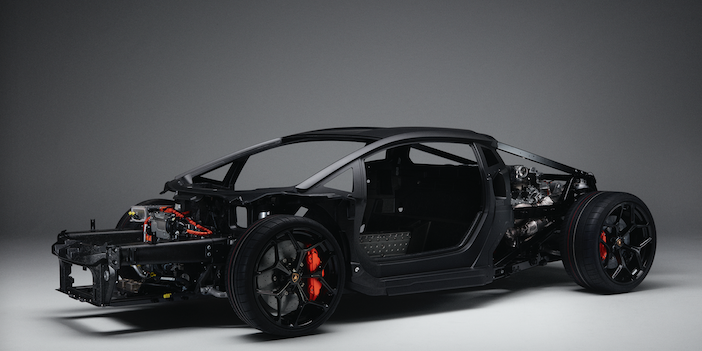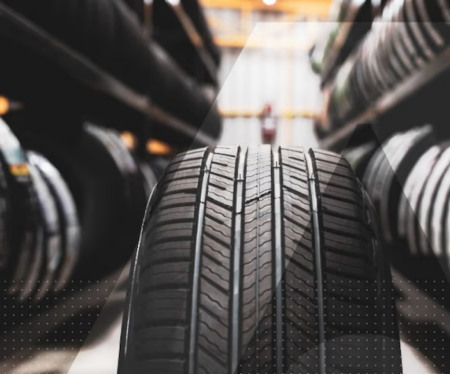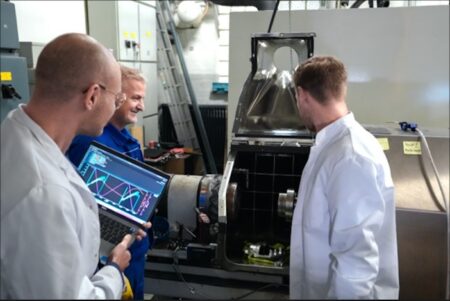Automobili Lamborghini is marking its 60th anniversary this year, with celebrations around the world and the launch of LB744, the replacement for the Aventador, featuring the first hybrid plug-in V12. The team in Sant’Agata Bolognese have also revealed the innovation underpinning this High Performance Electrified Vehicle (HPEV): a new aeronautics-inspired chassis, dubbed the ‘monofuselage’.
The monofuselage has a monocoque made entirely of multi-technology carbon fibre, featuring a front structure made from Forged Composites; a special material made of short carbon fibres soaked in resin, which Lamborghini developed and first applied in structural applications in 2008.
Forged Composites featured in the Aventador, but with the monofuselage, Lamborghini says it has achieved “a significant step forward” in terms of torsional stiffness, weight reduction and driving dynamics. The LB744 will be the first super sports car to be fitted with a 100% carbon fibre front structure, with carbon fibre also used for the front cone structures to enable a higher level of energy absorption than with traditional metal structures. The engineers say the monofuselage’s carbon fibre front structure enables double the energy absorption of the Aventador Ultimae’s aluminium front frame.
The LB744 monofuselage is claimed to be 10% lighter than the Aventador chassis, and the front frame 20% lighter than its aluminium predecessor. The torsional stiffness has also been improved, with the LB744’s value of 40,000 Nm/° being 25% more than that of the Aventador, benefiting its dynamic capabilities.
You can watch a video explanation of the monofuselage HERE.
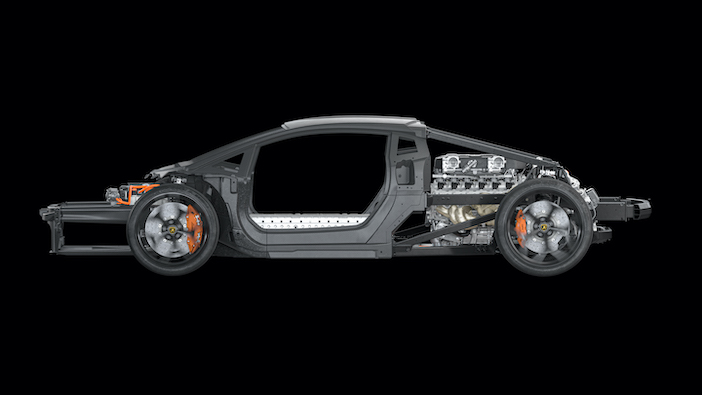
The rear chassis is made of high-strength aluminium alloys, with a notable feature being the two hollow castings in the rear dome area. These castings integrate the rear suspension’s shock towers and powertrain suspension into a single component with a closed inertia profile, creating benefits over the Aventador design including a significant reduction in weight, an increase in rigidity and a reduction in welding lines.
Lamborghini says the design concept underlying the monofuselage is based on achieving the maximum integration between components. A key enabler is the extensive use of Forged Composites technology, as well as the development of the monolithic rocker ring. The latter is a single- element ring-shaped component made of CFRP (carbon fibre reinforced plastic), which forms the supporting structure of the car. The rocker ring encloses and connects the Forged Composites elements such as the tub, the front firewall and A pillar.
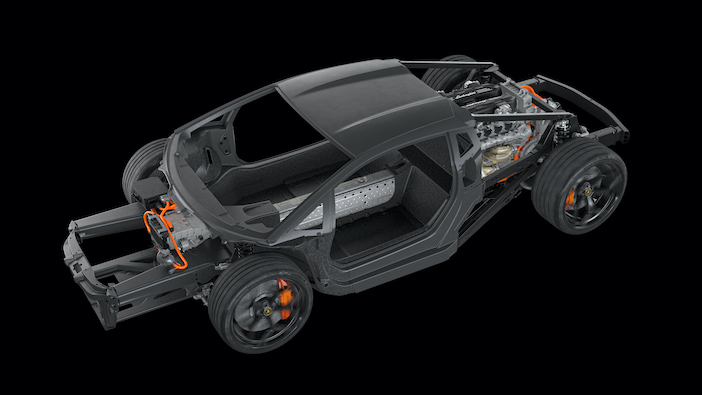
A sustainable supercar?
While the lightweight construction of the LB744 may deliver some modest fuel economy and emissions benefits over the Aventador (the Aventador LP 780-4 Ultimae has combined fuel consumption of 18.0 l/100 km and combined CO2-emissions of 442 g/km (WLTP)), greater sustainability benefits arise from the production process.
Lamborghini claims the manufacturing process of Forged Composites components uses less energy and cooling, and produces less waste materials than metal equivalents.
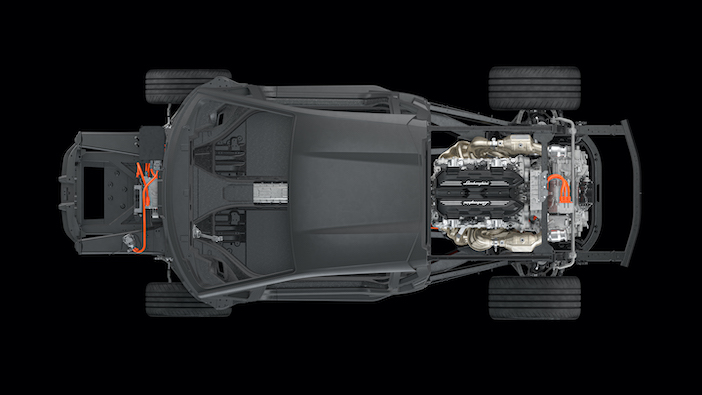
The more traditional, but still efficient, technology of autoclave composite production with pre-impregnated material will be retained for the roof construction of the LB744. The autoclaved carbon fibre meets high technical, aesthetic and quality requirements of a supercar, complemented by craftsmanship in the highly specialised hand lay-up process. This method of manufacturing also gives customers more options for roof customisation.
The LB744 represents what Lamborghini calls a new “year zero” in relation to the use of carbon fibre in car production, summed up in the acronym AIM (Automation, Integration, Modularity). Automation refers to the introduction of automated and digitalised processes into material transformation, while preserving traditional Lamborghini manufacturing, such as in the production of composites.
‘Integration’ relates to the integration of several functions into a single component through the development of compression moulding. This process uses preheated polymers to enable the production of components with a wide range of lengths, thicknesses and complexity, ensuring optimum integration between components to guarantee high torsional stiffness. Finally, Modularity refers to making the applied technologies modular and therefore flexible and efficient for responding to changing product requirements and characteristics.


